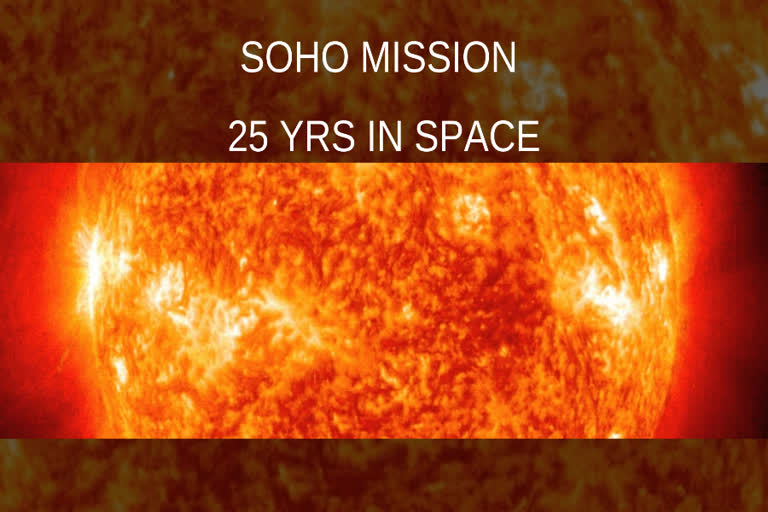Washington: Over the years, its set of instruments became a source for numerous scientific findings, an inspiration for follow-on missions, and an outlet for citizen scientists.
SOHO was meant to provide a comprehensive look at the flow of energy and material from the Sun toward Earth.
The 12 instruments onboard allowed the spacecraft to return a specialized combination of observations -- an asset for solar scientists who wanted to understand how our star worked.
At the time, this kind of basic physics research was considered the main goal, but over the last quarter of a century, researchers learned they could, in fact, begin to monitor our Sun in real-time, studying and attempting to predict the space weather it sent our way.
"At the time SOHO was designed, very few people talked or thought about space weather," SOHO Project Scientist Bernhard Fleck at ESA said in a statement.
"But now, I look at SOHO observations like weather radar. Now it is as normal as opening your weather app and checking when the rain is coming."
This ability is due to SOHO's coronagraphs, specialized telescopes that block the bright face of the Sun to allow for better visibility of the faint light extending from the star.
SOHO's Large Angle and Spectrometric Coronagraph, known as LASCO, provides a 360-degree view of the atmosphere around the Sun.
New science came out of LASCO's ability to image giant eruptions of solar material and magnetic fields, known as coronal mass ejections (CME).
Researchers could finally see the shape and structure of CMEs in breathtaking detail.
When these storms are aimed at Earth, they can impact the functionality of spacecraft, threaten astronauts on spacewalks, and even, when very intense, impact power grids on the ground, NASA said.
LASCO was especially useful in viewing Earth-bound storms called halo CMEs - so-called because when one views a CME barrelling toward us on Earth, it appears circular, surrounding the Sun, much like watching a balloon inflate by viewing the top of the balloon.
Before SOHO, the scientific community debated whether or not it was even possible to witness a CME coming straight toward us, but today, LASCO images are the backbone of space weather prediction models.
They are regularly used in forecasting the impacts of space weather events traveling toward Earth.
"Having a coronagraph observing all around the Sun helped us to see CMEs coming toward us," said Terry Kucera, astrophysicist in NASA's Goddard Space Flight Center's Solar Physics Laboratory in Greenbelt, Maryland.
"That's been really critical in understanding space weather and allowing scientists to study how CMEs affect us here on Earth."
Also Read: Protecting Critical Infrastructure from Cyber Attacks
(Inputs from IANS)



